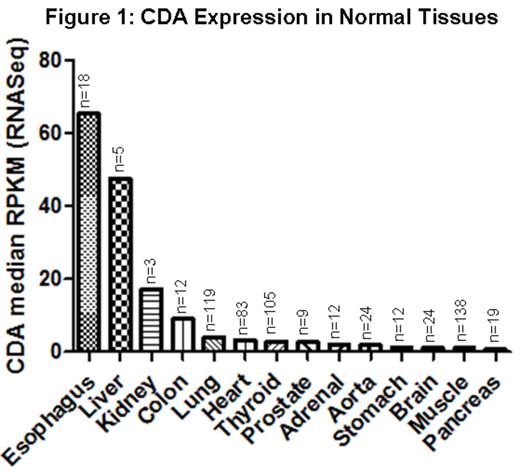Abstract
DNA methyltransferase (DNMT1) is a validated molecular target for epigenetic therapy of non-malignant diseases (e.g., sickle cell disease, SCD) and cancer. DNMT1 can be depleted by decitabine (Dec), an FDA-approved drug, without off-target cytotoxicity, reproducibly demonstrated pre-clinically. Dec, however, has pharmacologic limitations that impede translation into clinical epigenetic therapy. For e.g., DNMT-depletion requires Dec levels to overlap with cellular S-phase entry, yet the plasma half-life of Dec is <20 minutes, severely curtailing the probability of such overlap. This problem is not solved by increasing Dec dose, since off-target effects from higher Cmax causes cytotoxicity that paradoxically decreases efficacy by restricting the feasible frequency of administration. Similarly, continuous infusion is likely not the answer, since toxic increases of Dec can occur in some tissues while inadequate exposure remains in others. This unbalanced distribution could be related to widely diverging tissue expression of cytidine deaminase (CDA), the enzyme that rapidly deaminates the deoxycytidine analogue Dec and the related DNMT1-depleting cytidine analogue 5-azacytidine (5Aza)(Fig 1, RNA-Seq). Moreover, CDA expression is particularly high in the intestines and liver (Fig 1), suggesting that CDA could be a barrier to oral bioavailability of cytidine analogues (Fig1, RNA-Seq).
Therefore, to address limitations of Dec, this Phase 1/2 clinical trial combined oral Dec with a CDA inhibitor (oral tetrahydrouridine, THU) in patients with high risk, hydroxyurea refractory SCD (NCT01685515). The pharmacokinetic (PK) objectives were to (i) extend Dec half-life/Tmax, to hours instead of minutes to increase S-phase dependent DNMT1-depletion (ii) without high Dec Cmax that causes off-target effects and cytotoxicity (intended Cmax >5nM and <200nM), and (iii) to decrease within and between patient variability in Dec distribution. The clinically relevant pharmacodynamic (PD) objective was to increase fetal hemoglobin (HbF) with repeat dosing 2X/week for 8 weeks. Fixed dose oral THU 10 mg/kg was administered 60 minutes before oral Dec at: 0.01, 0.02, 0.04, 0.08 or 0.16 mg/kg (5 cohorts of 5 pts randomized 3/2 Dec/placebo). Plasma Dec quantification was by LC-MSMS at 0, 2, 4 and 24 hours after Dec administration.
Sixteen patients had received placebo or Dec at time of writing. Dec PK was measured in 8 non-placebo subjects (2 each in cohort 1 and 2, 3 in cohort 3, and the 1 subject enrolled thus far in cohort 4). Dec levels were detectable in all. Cmax was at 2 hrs, with a 50% decline from Cmax observed at 4 hrs (Fig 2, PK). There was a dose-dependent increase in Cmax and AUC (Fig 2). Previously, relative bioavailability in mice of oral THU-Dec vs oral Dec was estimated at 900% (Lavelle et al, Blood 2012). Circulating F-cells (HbF enriched red cells) were observed to increase in cohort 4 (Dec 0.08 mg/kg, approx. 3 mg/m2) when Cmax approached 20 nM: 14.4% at baseline to 22% at week 4 to 31% at week 8; with corresponding increases in HbF% from 1.8 to 3.4 to 5.4% (Fig 2, PD). This data was consistent with the minimum dose of oral THU-Dec that increases HbF% in baboons scaled by body surface area (Lavelle et al, Blood 2012).
Combining mini-dose Dec with the CDA inhibitor THU Dec produced a major improvement in oral bioavailability and the wide Dec concentration-time profile (low Cmax, long Tmax) that is desirable for DNMT1-depletion without cytotoxicity. These observations also imply multi-hour, balanced distribution of Dec through solid tissues. Stated another way, this PK data confirms that CDA is responsible for the severe reduction in Dec half-life from >12 hours in vitro to <20 minutes in vivo, and for unbalanced Dec tissue distribution, pharmacology that has impeded clinical translation of promising pre-clinical observations, and that can be addressed by combination with THU.
DeSimone:University of Illinois at Chicago: patents related to decitabine Patents & Royalties. Saunthararajah:University of Illinois at Chicago: patents related to decitabine Patents & Royalties.
Author notes
Asterisk with author names denotes non-ASH members.



This feature is available to Subscribers Only
Sign In or Create an Account Close Modal